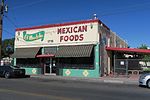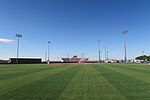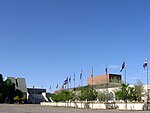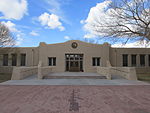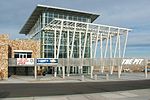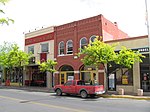San Jose, Albuquerque
Neighborhoods in Albuquerque, New Mexico
San Jose is a neighborhood in southern Albuquerque, New Mexico. It was originally a separate village but was absorbed into the city in the 20th century. San Jose was first settled as a Hispanic farming community in the mid-1800s but transitioned to a working-class urban neighborhood after the arrival of the railroad in 1880. The neighborhood includes a mix of residential and industrial properties with a commercial district centered on Broadway Boulevard.
Excerpt from the Wikipedia article San Jose, Albuquerque (License: CC BY-SA 3.0, Authors).San Jose, Albuquerque
Broadway Boulevard Southeast, Albuquerque Kirtland Addition
Geographical coordinates (GPS) Address Nearby Places Show on map
Geographical coordinates (GPS)
| Latitude | Longitude |
|---|---|
| N 35.057 ° | E -106.645 ° |
Address
Broadway Boulevard Southeast
Broadway Boulevard Southeast
87190 Albuquerque, Kirtland Addition
New Mexico, United States
Open on Google Maps



